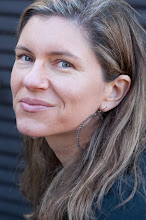The following was published in Harvard Women's Health Watch.
Nighttime awakenings in menopause may be caused by sleep disorders, not hot flashes
Hot flashes aren’t anybody’s friend, but they may be getting an unfair rap for disrupting women’s sleep at midlife. Studies have often reported that sleep problems increase during the menopausal transition, reinforcing the idea that hot flashes (also called vasomotor symptoms) are to blame. But even under controlled conditions in sleep laboratories, the connection between hot flashes and sleep disruption remains unclear. Moreover, in certain circumstances, vasomotor symptoms may be the result — not the cause — of nighttime awakenings. Now, a study concludes that some of the sleep problems that women typically attribute to hot flashes may instead be caused by primary sleep disorders such as apnea. The findings suggest that women may not be receiving appropriate treatment for their sleep difficulties.
To determine the cause of poor sleep in peri- and postmenopausal women, researchers at Wayne State University School of Medicine in Detroit assessed the sleep of 102 women, ages 44 to 56, who reported having trouble sleeping. Participants were interviewed about their sleep histories, and they completed questionnaires to evaluate mood and sleep quality. In the sleep laboratory, subjects were hooked up for one night to recording devices, allowing researchers to collect data on participants’ skin temperature, skin conductance (a measure of sweating), blood flow, respiration, leg movements, eye movements, brain-wave activity, and muscle movements in the chin.
The researchers found that 31 women had periodic limb movements (PLM), 23 had sleep apnea, and six had both. In other words, 53% had a primary sleep disorder. Among the entire group, 56% had measurable hot flashes. A separate analysis of the data showed that while apnea, PLM, and brief awakenings were the best predictors of poor sleep in the laboratory, on the questionnaires completed beforehand, poor sleep was more likely to be associated with anxiety and hot flashes during the first half of the night. (In an earlier study, the Wayne State researchers, led by Dr. Robert R. Freedman, showed that hot flashes wake women in the first half of the night but not the second.)
PLM, a significant cause of daytime sleepiness, is characterized by contractions of the limb (usually the leg) at regular intervals during sleep and in roughly the same way: the big toe and ankle tighten and flex, sometimes followed by the knee and hip. Limb movements occur about every 20 to 40 seconds, typically during the first half of the night. Sleep apnea (also a major cause of daytime sleepiness) is shallow breathing or the cessation of breathing for brief periods during sleep. Untreated, it can boost blood pressure and lead to cardiovascular disease.
The Wayne State investigation is the first to examine menopausal sleep complaints using both objective and subjective measures. The study was small and may not be representative of all menopausal women with sleep complaints. But the finding that half the women in this sample had primary sleep disorders, not just hot flashes, bears further investigation. Sleep problems are often assumed to result from hot flashes, but treating hot flashes isn’t likely to resolve a serious underlying sleep disorder.
Writer, Harvard-trained board-certified gynecologist, yoga teacher, mom. I believe in evidence-based ancient medicine. My specialty: bioidentical hormones + botanicals. I've partnered in, predicted, and personalized healing with women since 1989. For more info, visit www.SaraGottfriedMD.com. Return to balance, naturally™.
Subscribe to:
Post Comments (Atom)
Gottfried Center for Integrative Medicine's Fan Box
Gottfried Center for Integrative Medicine on Facebook
About Me

- Dr. Sara Gottfried, MD
- I'm an organic gynecologist, yoga teacher + writer. I earn a living partnering with women to get them vital and self-realized again. We're born that way, but often fall off the path. Let's take your lousy mood and fatigue, and transform it into something sacred and useful.
No comments:
Post a Comment